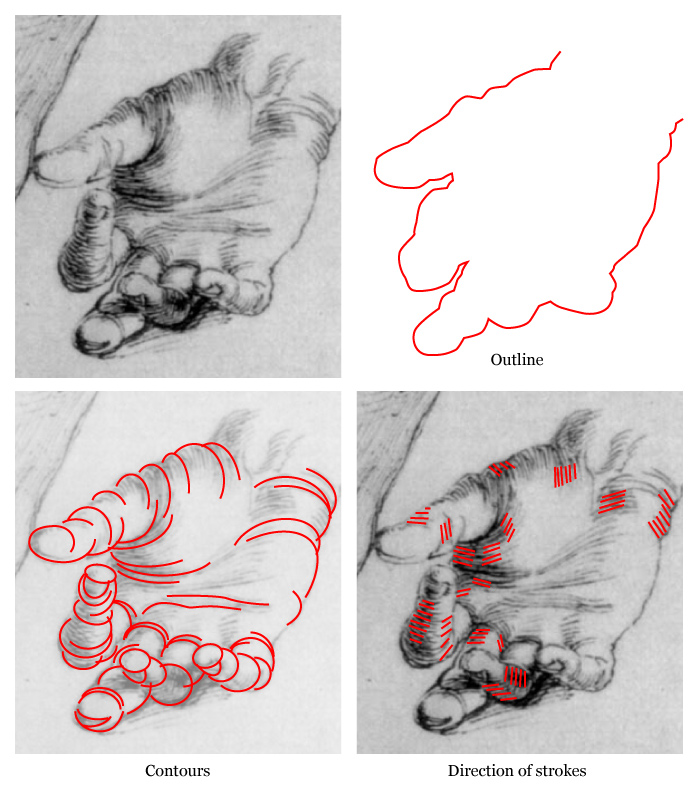Question from Victoria
I am a portrait painter and narrative painter. Unfortunately, I have had to be dependent on photos because I am unable to do live sittings with my subjects due to time constraints and the ages of my subjects, so my life drawing skills are very weak, though I continue to sketch daily.
I lived on Okinawa, Japan off and on since 1965, and the last time was 28+ years straight. In March 2015, I returned to live in the USA, in Las Cruces, NM.
Presently, I’m painting from photos of subjects on Okinawa and portraits here in the USA. I also started making mixed-media fabric collages as a way to try a new process for the pure fun of it. Thank you for this opportunity to share.
Here’s my question – How to get correct foreshortening using values?
Victoria
Dear Victoria,
Many thanks for your story and question.
The secret of getting correct foreshortening in drawing is by depicting contours; values are secondary.
I will explain why.
Think of using values as decorating a house. Values are just different tones of paint with which you can paint walls. One wall will be darker, another lighter, and so on. However, if the house is not built soundly, no lick of paint will fix a shaky construction.
The way to constructively “build” a foreshortened object in drawing is to use contours that describe the spatial relationships of an object’s parts.
Keep in mind the difference between contours and outlines; they are not the same.
An outline is an outer visible edge that goes around an object. Contours are virtual lines of cross-sections with virtual planes of an object that intersect at any place and angle. There is usually just one online for any part of an object, but an indefinite number of contours.
The Old Masters knew this and used contours skillfully.
Here’s an example, a study of a hand by Albrecht Dürer:

The outline alone cannot reveal a foreshortened hand; in fact, it doesn’t even look like a human hand at all.
Contours, however, give a good presentation of the hand’s shape and position and curvature of fingers. They can be drawn around phalanges and joints, bones and muscles.
When construction of the hand is in place, tonal values can further describe planes of the hand and fingers. Check how the artist applied strokes in the direction of contours.
Using tonal values is the way to portray contours and planes of an object, or in other words, the construction of an object. When a contour curves inward into an object, away from the light source, it pulls darker values of shades along.
Values are also used to demonstrate the joints between planes, where the border of shadow will usually be.
I hope this explains the role of values and contours in foreshortening.
Best regards,
Vladimir
To learn human anatomy fast, visit the Anatomy Master Class »
To learn professional drawing techniques,
Enroll in the Drawing Academy Course
Pay once - Enjoy forever!
Only $297
Thank you, this really gave me a new insight to developing foreshortening values using contour as a foundation!
Helps me to see things in a better perspective!
Victoria






Thank you very much for your detailed explanations,
now I clearly understand the difference between the contour and the outlines..
Me ha encantado la explicación, muchas gracias
Fernando
An excellent explanation……( and drawings,) to help one fully understand the difference.
Thank you Vladimir.
Thank you
Thank you for the clear and detailed explanation. Your verbal and visual illustrations make it easy to understand the difference.